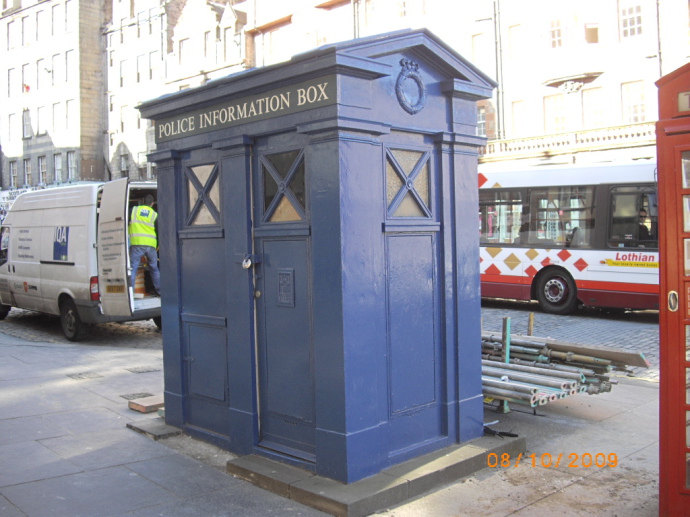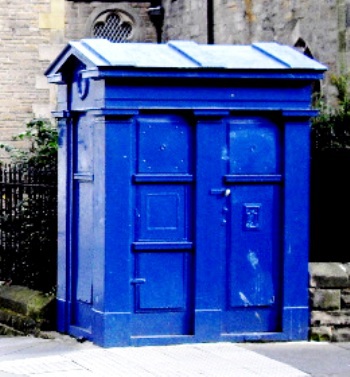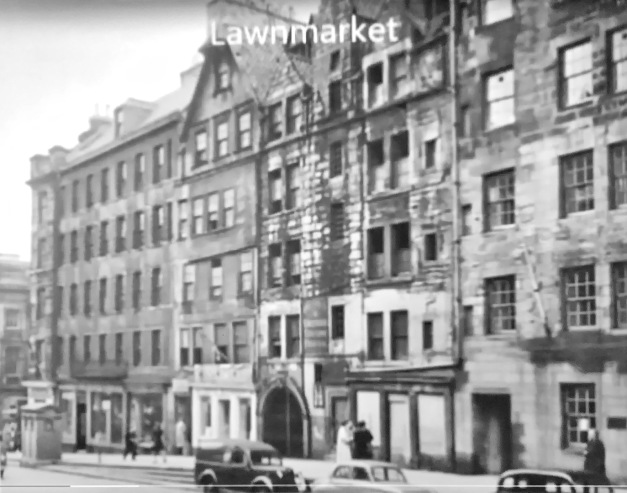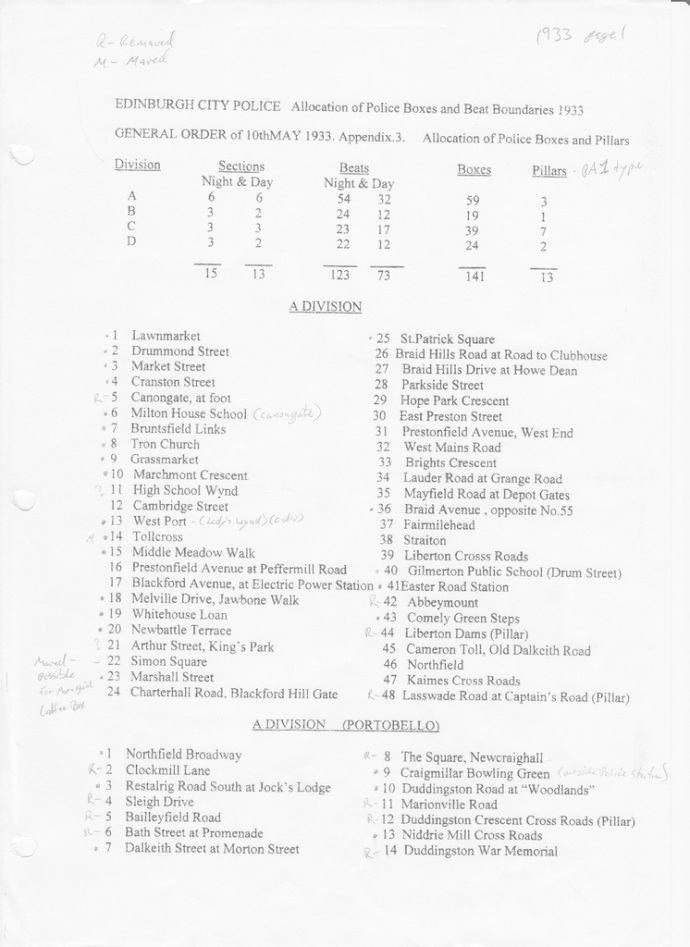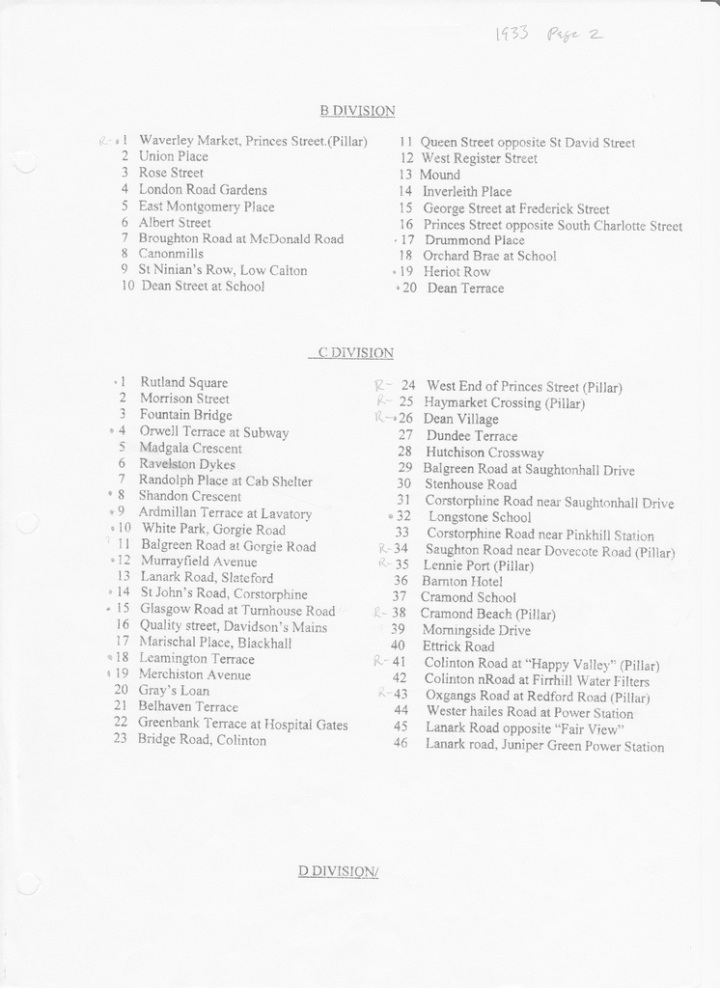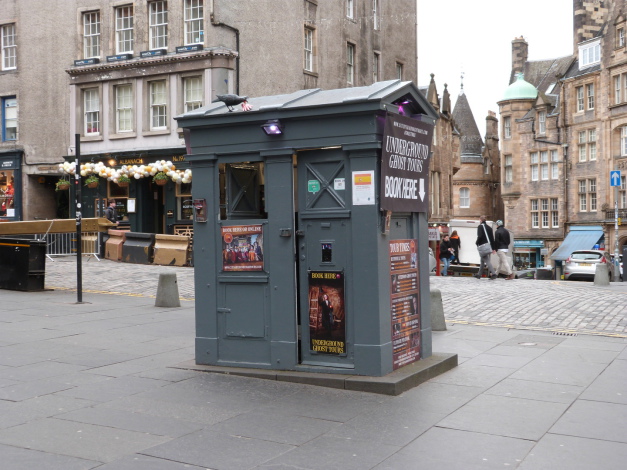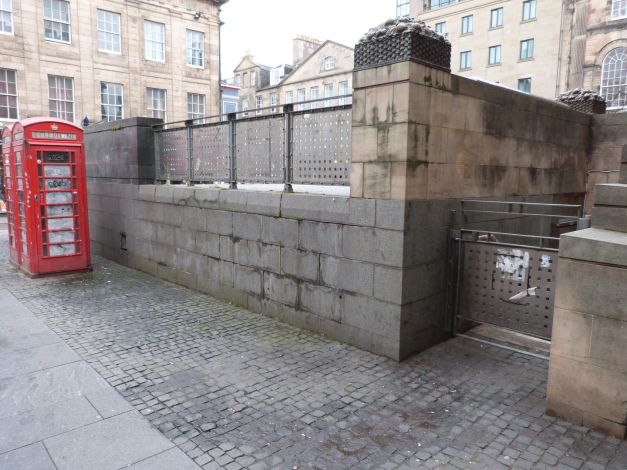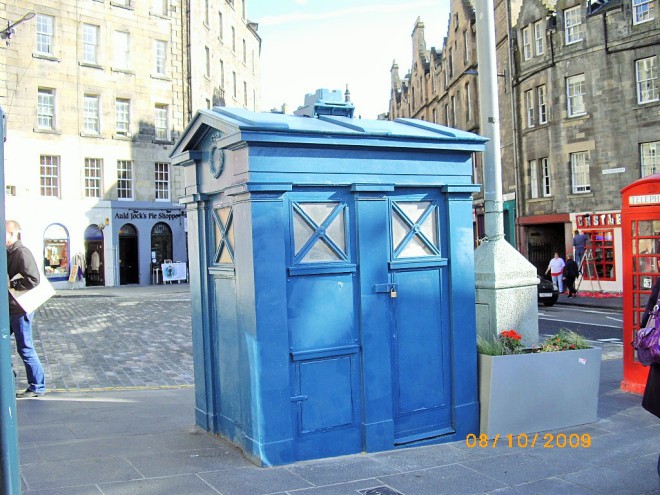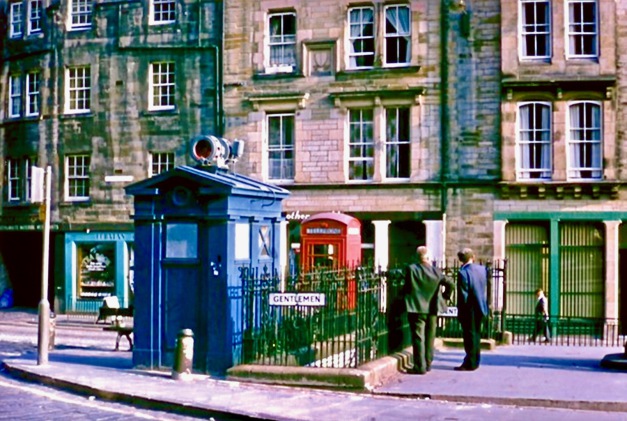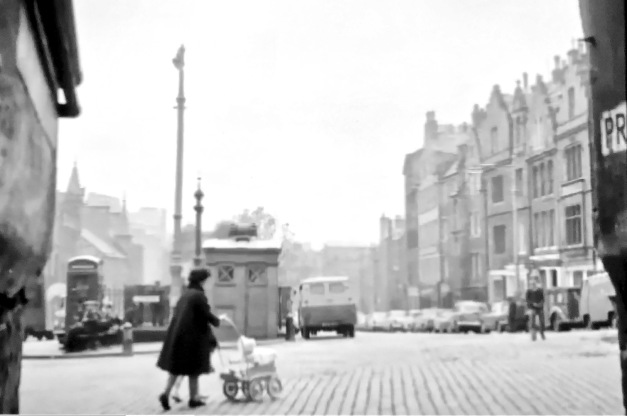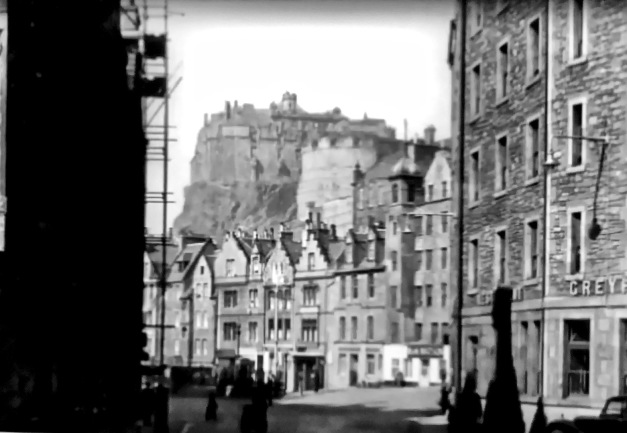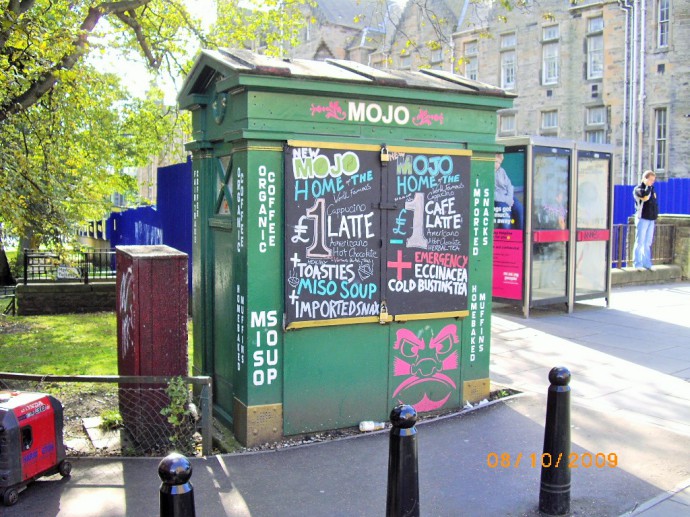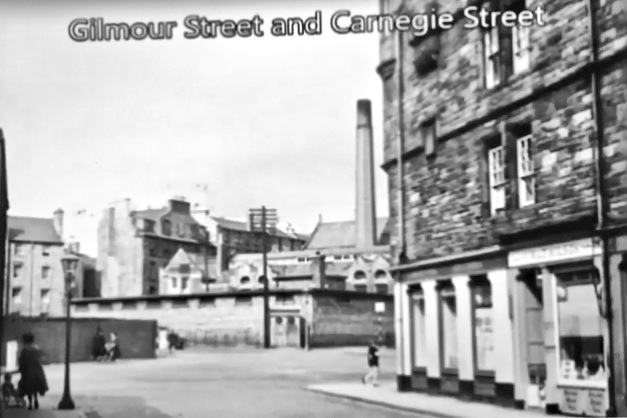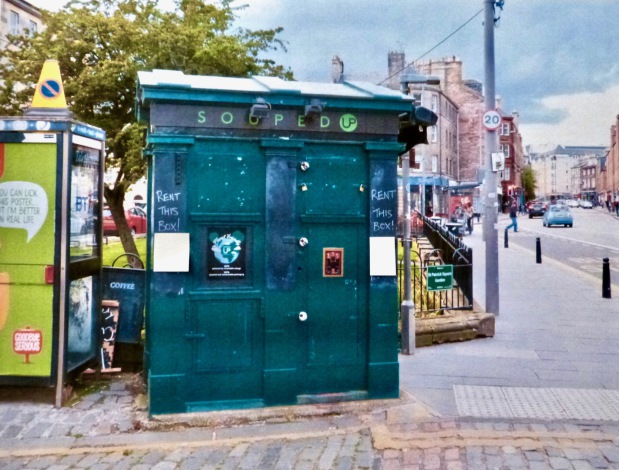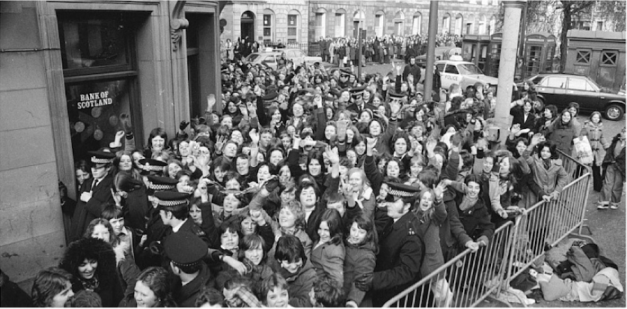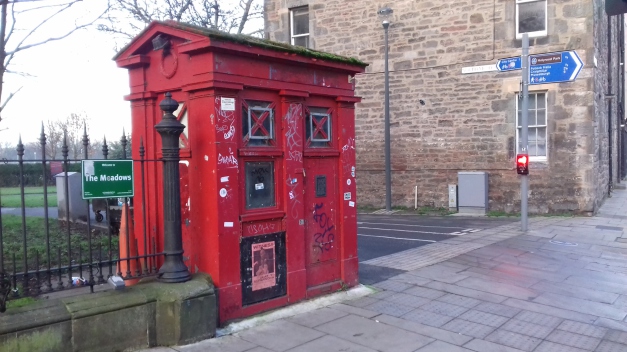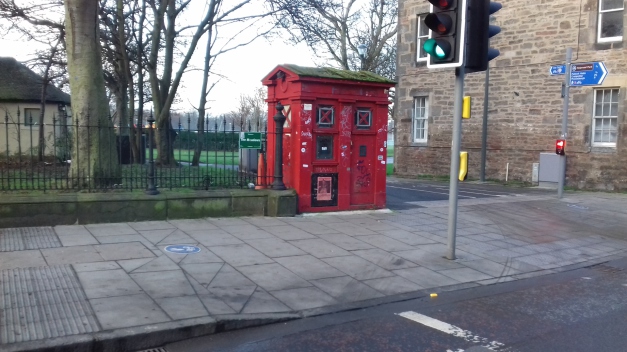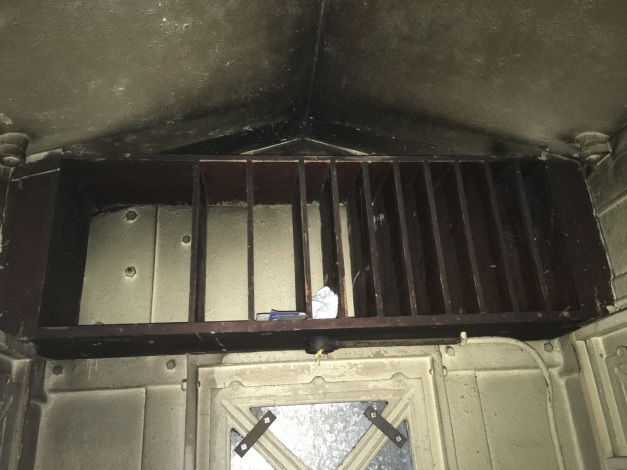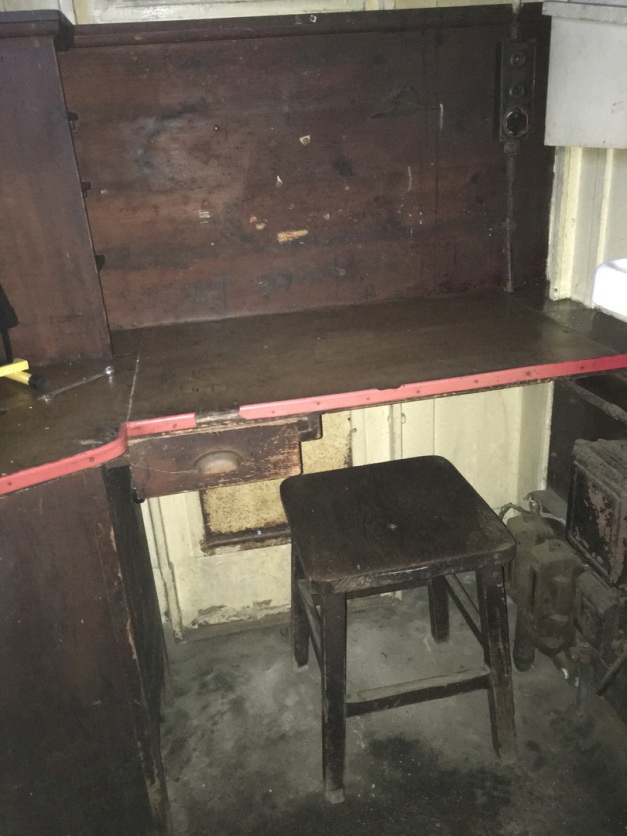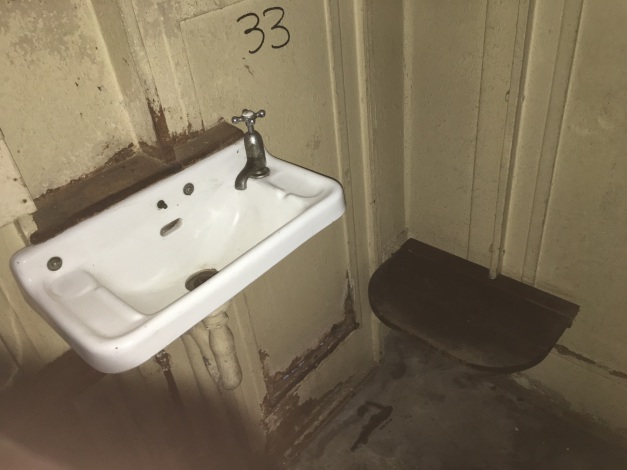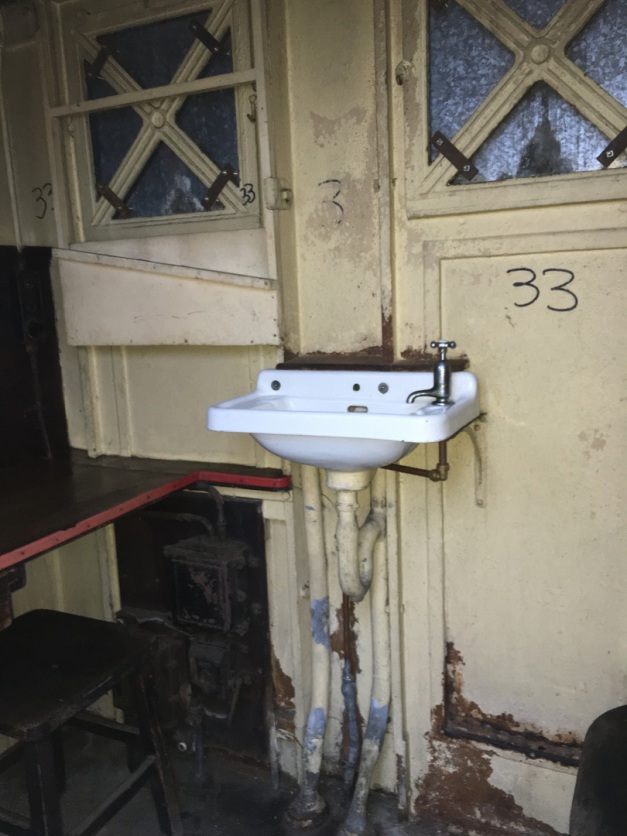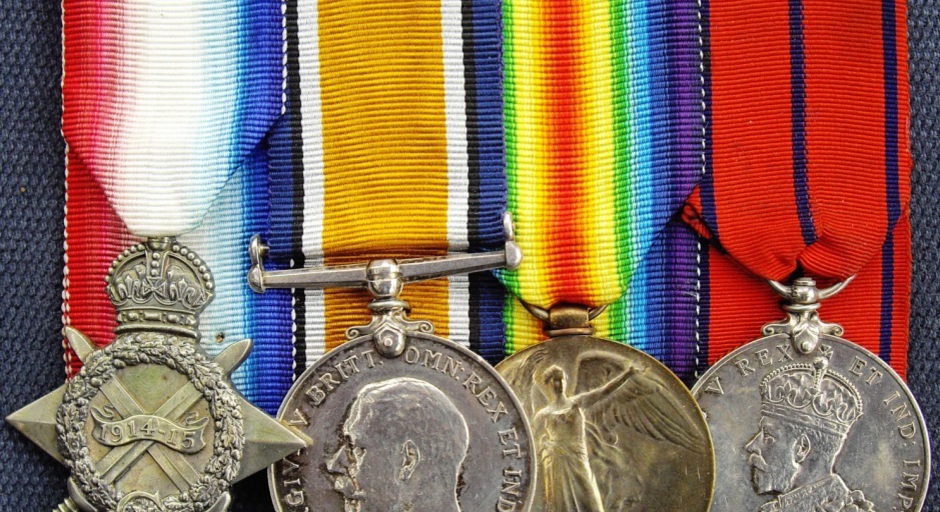
Edinburgh City Police Gallery 3
The Beat Box System of Policing introduced to Edinburgh City Police in 1933
The Police Box System of Edinburgh City Police introduced in 1933:
The three sheets below show the original positions of the Police Boxes and Pillars introduced in 1933.
The lists also show the Fixed Traffic Duty Points introduced at the same time. I remember there were still Fixed Points Teams in Princes Street in the early 1970s.
Over the years the numbers of the boxes changed and what I remember from the early 1970s of A Division bears no resemblance to the numbers on these lists.
I think the list below is correct for the 1st and 2nd Sections of ‘A’ Division in 1974 but I am happy to be corrected.
|
Box Number |
Location |
|
1 A |
The Lawnmarket |
|
2 A |
Tron Square (above the Public Toilets on South Bridge) |
|
3 A |
Cranston Street (at the junction with Canongate) |
|
4 A |
Milton House Primary School (at the bottom of the Canongate) |
|
5 A |
High School Yards (just off the Cowgate) |
|
6 A |
The Grassmarket (above the Public Toilets and facing the Cowgate) |
|
7 A |
Laurieston Place (at the Edinburgh Royal Infirmary) |
|
8 A |
Marshall Street |
|
9 A |
Richmond Lane (just of St Leonard's Street) |
|
10 A |
St Patrick Square |
|
11 A |
Parkside Street (at St Leonard’s Coal Depot) |
|
12 A |
Hope Park Crescent |
Please feel free to contact me with additions or corrections to any of the information on Police Boxes.
A Division Police Boxes in 1933
B & C Division Police Boxes in 1933
D Division Police Boxes and Traffic Duty Points in 1933
Box 2 A formerly Tron Square above the Public Toilets, now at High Street opposite Cockburn Street.
Box 3 A Cranston Street at the junction with the Canongate in 2016.
Box 4 A Milton House Public School in 2016
Box 5 A Flodden Wall 2016 (This used to be at the bottom of High School Yards & the Cowgate in the 1970s)
The following link https://www.buildingsatrisk.org.uk/details/917183 will take you to a Register for Scotland of Buildings at Risk, one of which is the former Box 5A now at the Flodden Wall.
The text confirms that this box was moved from its original position at the bottom the steps in High School Yards, in 2014.
The box is at present (2018), for sale!
Box 6 A The Grassmarket East End in 2009
In the 1970s there were several 'Common Lodging Houses' either in, or very near the Grassmarket.
Box 7 A Lauriston Place in 2009
Box 8 A Marshall Street in 2016
Box 9 A Richmond Lane at the junction with Gilmour Street, just off St Leonard's Street/Pleasance. No longer there in 2016.
Box 10 St Patrick Square in 2016
Box 11 A Parkside Street at St Leonard's Coal Depot. No longer there in 2016.
Box 12 A Hope Park Terrace
Inside a typical Edinburgh Police Box
To the left of the desk above the telephone was a list of the Beat Patrols.
These could be 'Half Hourly Turn' and '1st', '2nd' and '3rd Hourly Turns'.
Each 'Turn' had a list of streets in the order to which they were to be patrolled. The 'Turns' could be worked in random order and reversed to vary the route so that if being observed by villains, the 'Beat Man's' route could not be predicted.
After the introduction of personal radios in the 1960s, the 'Turns' became obsolete but they were still being used up to the late 1970s.
Section Sergeants and the Shift Inspector would come to the box and check which 'Turn' the Beat Man was on. Then dependent on the time of entry, they would either follow the PC's route until they found him or patrol it in reverse until they achieved the same result.
Even in the 1970s, when you met the Shift Inspector in the street, the PC came to attention and saluted him (up to 1975). They would then ask to see your pocket book and examine all the entries back to the last time it had been 'supervised' by them or a Section Sergeant. They would ask questions to confirm that any 'Summonses' and reports had been 'timeously submitted' and any matter requiring a report or any other action had been carried out.
If they were satisfied, they would sign and date the book and return it to the officer.
I later found that this was most certainly not the procedure in the Met!
